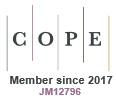Impacts of the CSIRO climate modelling program
Ian Smith A *
A *
A
Abstract
The role of climate modelling groups in the development of international agreements that aim to assess future climatic risks and limit greenhouse gas concentrations is not well recognised. It is arguable that no such agreements would have been possible without carefully designed and managed research programs that provided the data upon which these risks and thus, decisions were made. Many groups contributed data that underpinned the Intergovernmental Panel on Climate Change (IPCC) 5th Assessment Report published in 2014 that led to the ground-breaking Paris Agreement. Australia’s contribution included the results of a CSIRO climate model which had its genesis in a relatively simple weather forecast model two decades previously. Two people were mainly responsible for the modelling program which led to this accomplishment—Barrie Hunt and Hal Gordon. A brief history of the program is described here and. Examining some basic metrics reveals some surprising impacts.
Keywords: Barrie Hunt, citations, climate modelling, CMIP5, greenhouse effect, Hal Gordon, IPCC, Paris Agreement.
References
Anonymous (2022) PCMDI -Earth System Model Evaluation Project, Lawrence Livermore National Laboratory, https://pcmdi.llnl.gov/mips/cmip5/availability.html, viewed November 2024.
Bi, D., Dix, M., Marsland, S., O’Farrell, S., Rashid, H., Uotila, P., Hirst, A., Kowalczyk, E., Golebiewski, M., Sullivan, A., Yan, H., Hannah, N., Franklin, C., Sun, Z., Vohralik, P., Watterson, I., Zhou, X., Fiedler, R., Collier, M., Ma, Y., Noonan, J., Stevens, L., Uhe, P., Zhu, H., Griffies, S., Hill, R., Harris, R., and Puri, K. (2013) The ACCESS coupled model: description, control climate and evaluation, Australian Meteorological and Oceanographic Journal, 63(1), 41-64.
| Crossref | Google Scholar |
Collier, M., Rotstayn, L., Kim, K-Y., Hirst, A., and Jeffrey, S. (2103) Ocean circulation response to anthropogenic aerosol and greenhouse gas forcing in the CSIRO-Mk3.6 climate model, Australian Meteorological and Oceanographic Journal, 63(1), 27-39.
| Crossref | Google Scholar |
Dix, M., Vohralik, P., Bi, D., Rashid, H., Marsland, S., O’Farrell, S., and Puri, K. (2013) The ACCESS coupled model: documentation of core CMIP5 simulations and initial results, Australian Meteorological and Oceanographic Journal, 63(1), 83-99.
| Crossref | Google Scholar |
Fourier, J.-B. (1827) Mémoire sur les températures du globe terrestre et des espaces planétaires, Mémoires de l’Académie Royale des Sciences, 7(1827), 569-604 [In French].
| Google Scholar |
Frederiksen, C. S., Frederiksen, J. S., Sisson, J. M., and Osbrough, S. L. (2017) Trends and projections of Southern Hemisphere baroclinicity: the role of external forcing and impact on Australian rainfall, Climate Dynamics, 48, 3261-3282.
| Crossref | Google Scholar |
Gordon, H. (1981) Flux formulation of the spectral atmospheric equations suitable for use in long-term climate modelling, Monthly Weather Review, 109, 56-64.
| Crossref | Google Scholar |
Gordon, H. (1983) Synoptic cloud variations in a low resolution spectral atmospheric model, Journal of Geophysical Research, 88, 6563-75.
| Crossref | Google Scholar |
Hunt, B. (1980) Numerical modelling of climate, Australian Journal of Physics, 33(5), 897-910.
| Crossref | Google Scholar |
Jeffrey, S., Rotstayn, L., Collier, M., Dravitzki, S., Hamalainen, C., Moeseneder, C., Wong, K., and Syktus, J. (2013) Australia’s CMIP5 submission using the CSIRO-Mk3.6 model, Australian Meteorological and Oceanographic Journal, 63(1), 1-13.
| Crossref | Google Scholar |
Keeling, C. D. (1960) The concentration and isotopic abundance of carbon dioxide in the atmosphere, Tellus, 12, 200-203.
| Crossref | Google Scholar |
Meehl, G. A., Boer, G. J., Covey, C., Latif, M., and Stouffer, R. J. (2000) The coupled model intercomparison project (CMIP), Bulletin American Meteorological Society, 81, 313-318.
| Crossref | Google Scholar |
Pearman, G., Garratt, J., and Fraser, P. (2017a) CSIRO high-precision measurement of atmospheric CO2 concentration in Australia. Part 1: initial motivation, techniques and aircraft sampling, Historical Records of Australian Science, 28, 111-125.
| Crossref | Google Scholar |
Pearman, G., Garratt, J., and Fraser, P. (2017b) CSIRO high-precision measurement of atmospheric CO2 concentration in Australia. Part 2: Cape Grim, surface CO2 measurements and carbon cycle modelling, Historical Records of Australian Science, 28, 126-139.
| Crossref | Google Scholar |
Redmond-King, G. (2021) The Paris Climate Agreement, https://eciu.net/analysis/briefings/international-perspectives/the-paris-climate-agreement, viewed November 2024.
Rotstayn, L., Jeffrey, S., Collier, M., Dravitzki, S., Hirst, A., Syktus, J., and Wong, K. (2012) Aerosol and greenhouse gas induced changes in summer rainfall and circulation in the Australasian region: a study using single-forcing climate simulations, Atmospheric Chemistry and Physics, 12, 6377-6404.
| Crossref | Google Scholar |
Simmonds, I., and Smith, I. (1986) The effect of the prescription of zonally‐uniform sea surface temperatures in a general circulation model, Journal of Climatology, 6(6), 641-659.
| Crossref | Google Scholar |
Smith, I. (2007) Global climate modelling within CSIRO: 1981 to 2006, Australian Meteorological Magazine, 56(3), 153-166.
| Google Scholar |
Suppiah, R., Collier, M., Jeffrey, S., Rotstayn, L., Syktus, J., and Wong, K. (2013) Simulated and projected summer rainfall in tropical Australia: links to atmospheric circulation using the CSIRO-Mk3.6 climate model, Australian Meteorological and Oceanographic Journal, 63(1), 15-26.
| Crossref | Google Scholar |


